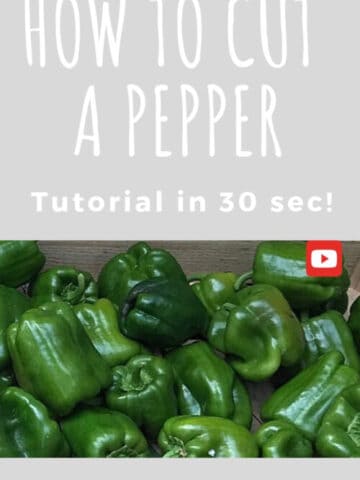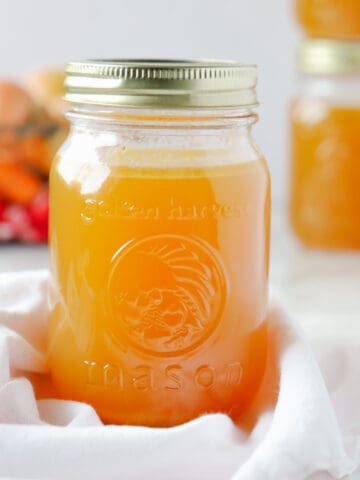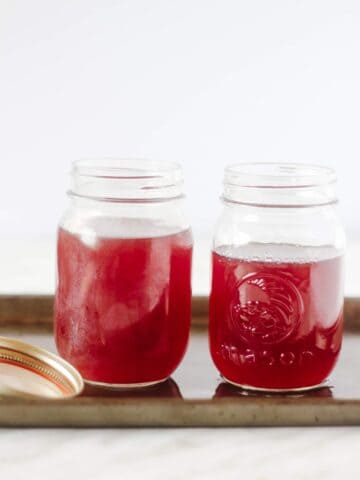If you’re not getting the results you expected by following certain recipes, chances are that it could relate to how you prepare your vegetables! Believe it or not, there are 8 main types of vegetable cutting across various cuisines, and even more with variations of each, and how you cut vegetables will have a direct impact on the success of your efforts. This is one of the basic skills it is great to master!
The size and shape of vegetable cuts will affect the cooking time, texture of the dish, as well as the flavor of the food! Honing your vegetable-cutting skills will build confidence in the kitchen and a greater appreciation at the dinner table!

This article will walk you through the 8 main types of vegetable cutting, the instance in which each is preferably used, and the size of the cut.
Jump to:
Stick Cuts
Julienne (Matchsticks)
This type of vegetable cut is also referred to as the matchstick or the allumette. It produces thin and long strips that assist uniform cooking without the vegetable losing its irresistible crunch.
Size: Approximately 4 cm in length, while other popular dimensions include 3mm x 3mm x 5cm.
Use: Perfect for stir-fries, salads, and garnish.
Type of vegetables: Carrots, cucumbers, celery, zucchini or peppers.

Batonnet
This cutting technique falls between the julienne and the bâton in terms of the size of the cut. It is used as the base for all dicing methods.
Size: This cut typically falls between the smaller Julienne cut and the larger baton cut.
Use: French fries, vegetable sticks, and appetizers.
Type of vegetables: Carrots, cucumbers, celery, or zucchini.

Bâton
This is a larger, thicker version of the julienne style of vegetable cut.
Size: 5 cm long, 5 mm wide, and 5 mm thick.
Use: Often used as an accompaniment, in dressings and salads.
Type of vegetables: Carrots, cucumbers, celery and zucchini.

Chiffonade (Shredding)
This refers to shredding into little ribbons, used predominantly on leafy greens. The leaves are stacked, rolled tightly, and then sliced perpendicular to the roll. Once sliced, fingers are used to separate the thin ribbons.
Size: Usually 4-10mm in width.
Use: Great for sauteing, garnish, and stuffing.
Type of vegetables and herbs: Spinach, sorrel, basil, and mint (or other flat-leaved herbs).

Dice Cuts
Brunoise: (Fine Dice)
This type of vegetable cut refers to small uniform cubes. In fact, it starts with the Julienne cut and then cut down further into very small uniformly sized cubes.
Size: Approximately 1-3mm cubes.
Use: Garnishing and stuffing, making sauces.
Type of vegetables: Hardy vegetables, such as root vegetables (beets and turnips), carrots, onions, leeks, celery, and bell peppers.

Macedoine (Small Dice) - French
This consists of a mixture of vegetables diced into small pieces. It can be enjoyed raw or cooked, hot or cold.
Size: About ¼ inch dice.
Use: Garnish for salsa, soups, and salads.
Type of food: Various vegetables or fruit.

Paysanne (Medium Dice)
This is prepared in the same way as the small dice-cutting methods, just slightly larger.
Size: About ½-inch dice.
Use: Salads and saute preparation.
Type of food: Various vegetables.

Carre (Large Dice)
“Carre” means “square” in French and refers to a larger diced cutting method with 6 even sides.
Size: 2cm or ¾ inches each.
Use: Salads and saute preparation.
Type of food: Vegetables (potatoes) and some fruits (watermelon)

Rondelle
This technique refers to a round or circular shape.
Use: Salads and saute preparation.
Type of food: Cucumber, zucchini, carrots, banana, pineapple, strawberry, kiwi.

Tourne/Chateau
This cutting technique turns vegetables into a barrel shape with seven sides. It enhances the appearance of the vegetables.
Size: 2 inches x 7 sides.
Use: Baked, roasted, boiled.
Type of food: potatoes.

Wedges
This is a cutting technique used on round fruits and vegetables, cut into 4-6 pieces.
Use: Salads, stews, garnish.
Type of food: Tomatoes, oranges, lemon, lime, potatoes.

Slicing
Most are familiar with the technique of slicing food into thin and broad slices.
Size: Slices can vary in size depending on the recipe direction given.
Use: Salads, pies, finger foods, or snacks alongside dips, and casseroles.
Type of food: Vegetables, fruit, meat, cheese, and bread.
Mincing
Mincing involves the fine cutting of ingredients into uniform pieces.
Size: Smaller than diced or chopped food.
Use: Stuffing or garnish.
Type of food: Herbs, onion, garlic, and ginger.
Cutting vegetables, fruits, and other foods correctly will immediately elevate the quality of any recipe. The uniformity of sliced vegetables looks appetizing while correctly diced and sliced ingredients will cook evenly and produce a better-tasting dish. When using any of these cutting techniques, always use a sharp knife and a stable wooden cutting board.











Arie says
Super helpful, thank you so much!